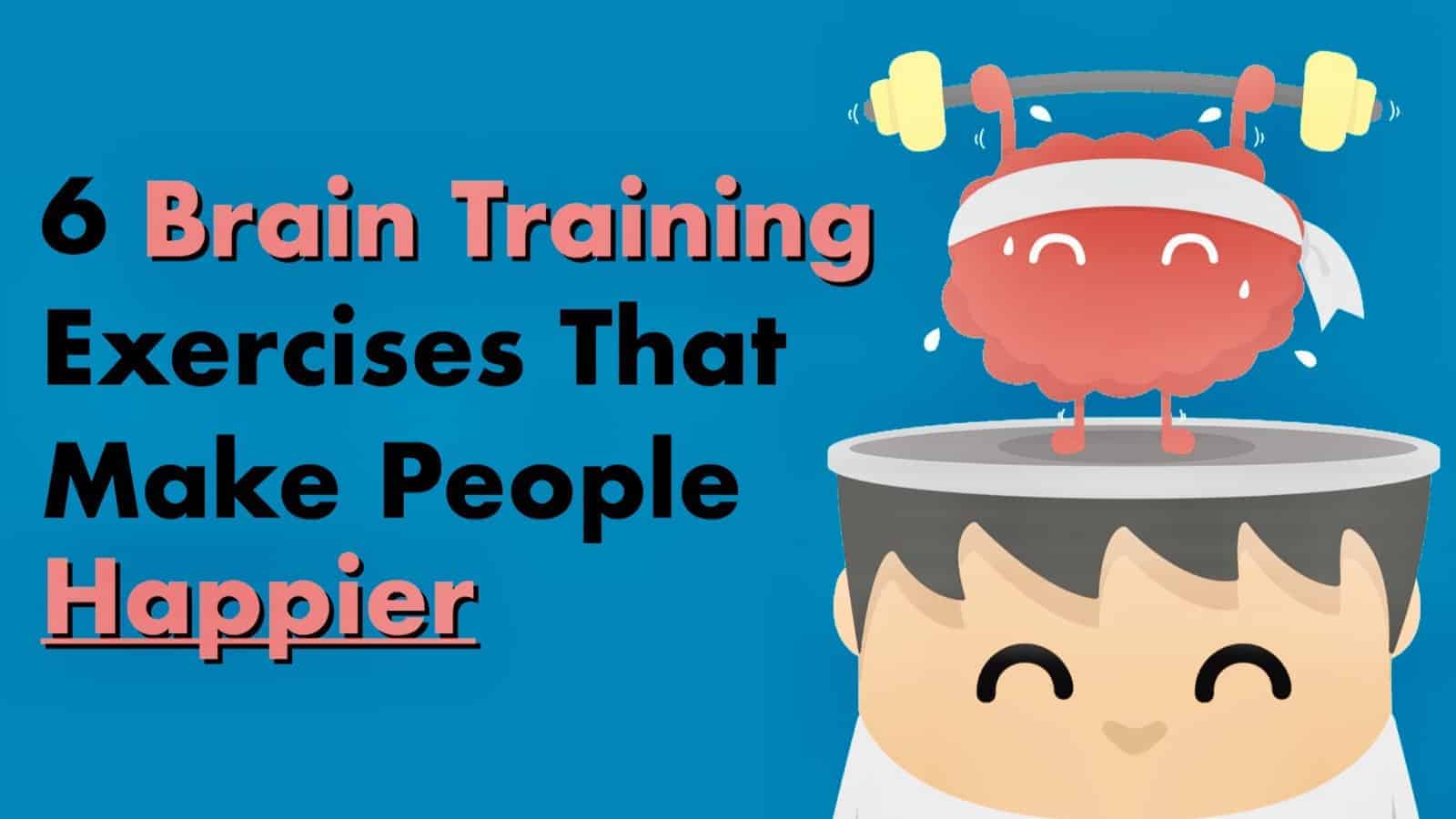What can you do to be happier? It turns out that the answer is simple–think positive thoughts. But that’s not as easy as it sounds without training your brain to embrace positivity.
“Your brain is simply built with a greater sensitivity to unpleasant news. The bias is so automatic that it can be detected at the earliest stage of the brain’s information processing.” ~ Hara Estroff Marano: “Our Brain’s Negative Bias”
The Negativity Bias
Many people make negative thinking a habit.
These eight words may be a tough pill to swallow, but it’s an unfortunate truth. Here’s an example of one of the several experiments by John Cacioppo, Ph.D., and professor at the University of Chicago:
Cacioppo showed a bunch of people some images known to produce positive feelings (for example, a cute animal or nice car); then showed the same group images associated with negative and neutral emotions.
Images of the cerebral cortex demonstrate that the brain produces more electrical activity following negative stimuli. (The cerebral cortex plays an essential part in consciousness.)
We attribute the brain’s tendencies to focus on the negative – once again – to our fight-or-flight response.
To override the innate negativity response, we must retrain our mind and brain. One of the best ways to do this is through positive thinking exercises.
If we make the practice of positive thinking habitual, we will witness positive transformations in just about every area of life.
We’ll begin to think, feel, and act with more positivity. In turn, these effects will improve our relationships, make us more productive, create powerful feelings of gratitude, and – in general – enable us to see things in a more positive light.
How great would that be?
Let’s get to it, then!
Here are Brain Training Exercises That Make People Happier

1. Relish the Present Moment
Martin Seligman, director of the Positive Psychology Network, emphasizes the importance of defining what a “good life” looks like to us.
Seligman recommends what is called the “beautiful day” exercise. The beautiful day exercise involves outlining how your ideal day would look like. Once you have your outline, put each step into practice while enjoying the present moment of each situation.
2. Breathe Mindfully
Of all six tips, this may be the most important. Breathing has an incredible amount of power when you simply pay attention to it.
Most times, we’re unaware of our breathing. Unless you’re a yogi master or something, your “regular” breath is probably suboptimal. Anger, anxiety, fear, stress, and tension almost automatically contribute to shallower breathing.
All you need is five minutes. Whether or not you’re anxious, sad or whatever, take five minutes a few times a day to focus on your breath.
Here’s a quick exercise:
– Sit upright, but not tight. Shoulders back, chest out.
– Rest your hands in a peaceful position.
– Now, focusing on the sensations of the nostrils, breath in deeply for 3 seconds. The inhale should fill your belly and diaphragm.
– Pursing your lips, exhale slowly for six seconds.
– Repeat six times.
An easy way to remember the exercise is to remember the numbers 3-6-6. 3-second inhales, 6-second exhales, 6 times!
Breathing has an incredible amount of power when you simply pay attention to it.
3. Listen to music to be happier
Whatever music puts you in a good mood, listen to it. Many people find that relaxing, meditative music and “white noise” mixes can work wonders.
Good music has been found in all sorts of studies to increase the “feel good” chemicals in the brain.
So jam out!

4. Express gratitude
It’s human nature to always think about the “next big thing” whatever that may entail.
Look at your own life. Have you ever constructed a scenario when the “ultimate happiness” would manifest?
“When I finish college, I’ll be happy.” “When I get that beautiful home…” “When I get the job I want…” “When I finally get the money I deserve…” When I get married…”
Make no mistake. These are all possibly beautiful things.
They lose their power to make us happy, however, when we forget about them! Practicing gratitude is so powerful because it’s a reminder of the things we already have. Further, it may remind us that we don’t need many of the things we think that we do.
Simple practice: write three things you’re grateful for every morning.
5. Smile
Flashing an ear-to-ear grinner has a particular type of magic.
Many studies show that smiling, whether or not we “feel” like it, produce “happiness” within the brain and body.
In a 30-year longitudinal study conducted at the University of California-Berkeley, researchers examined the smiles of students in an old yearbook and measured their well-being and success.
The researchers then hypothesized the following: how fulfilling and long-lasting their marriages would be, how highly they’d score on a standardized test of well-being, and how inspiring they’d be to others.
Those who smiled the widest in their yearbook photo reliably scored higher in all of the above measures.
6. Simplify
Whether we’re addicted to our phones, buying things we don’t need, overeating, or overcomplicating work – many of us can benefit from simplifying our lives.
Simplifying, and it’s close cousins – minimalism or decluttering – can make life easier.
When it comes right down to it, less is more – and these three magic words apply to just about everything, including possessions. It’s beyond the scope of this article to delve into everything simplifying entails, but it could mean:
– less clothing
– less clutter
– more open space (at work and in your home)
– eliminating debt
– going carless
– limiting expectations
The list is endless. And the feedback is overwhelmingly positive.

















